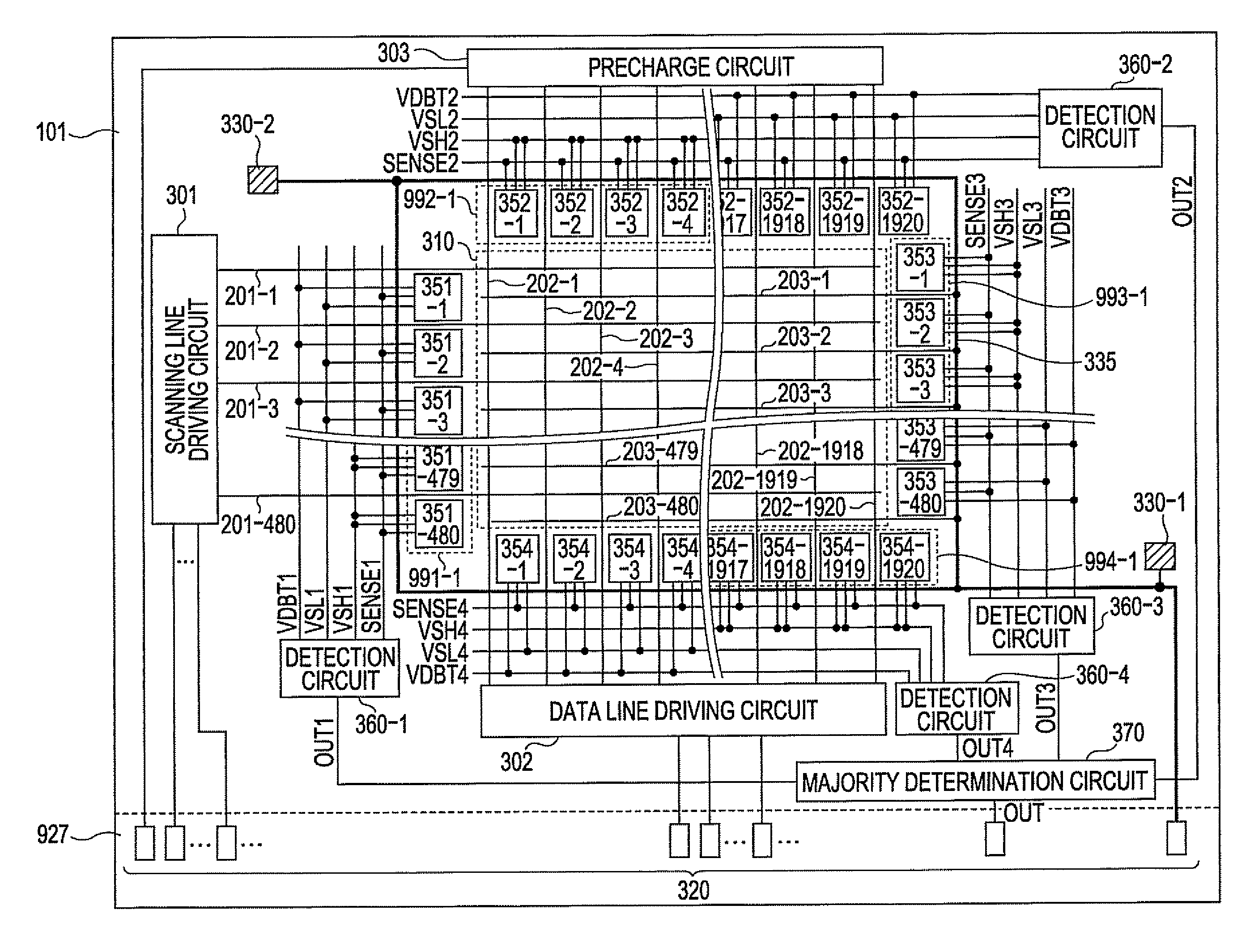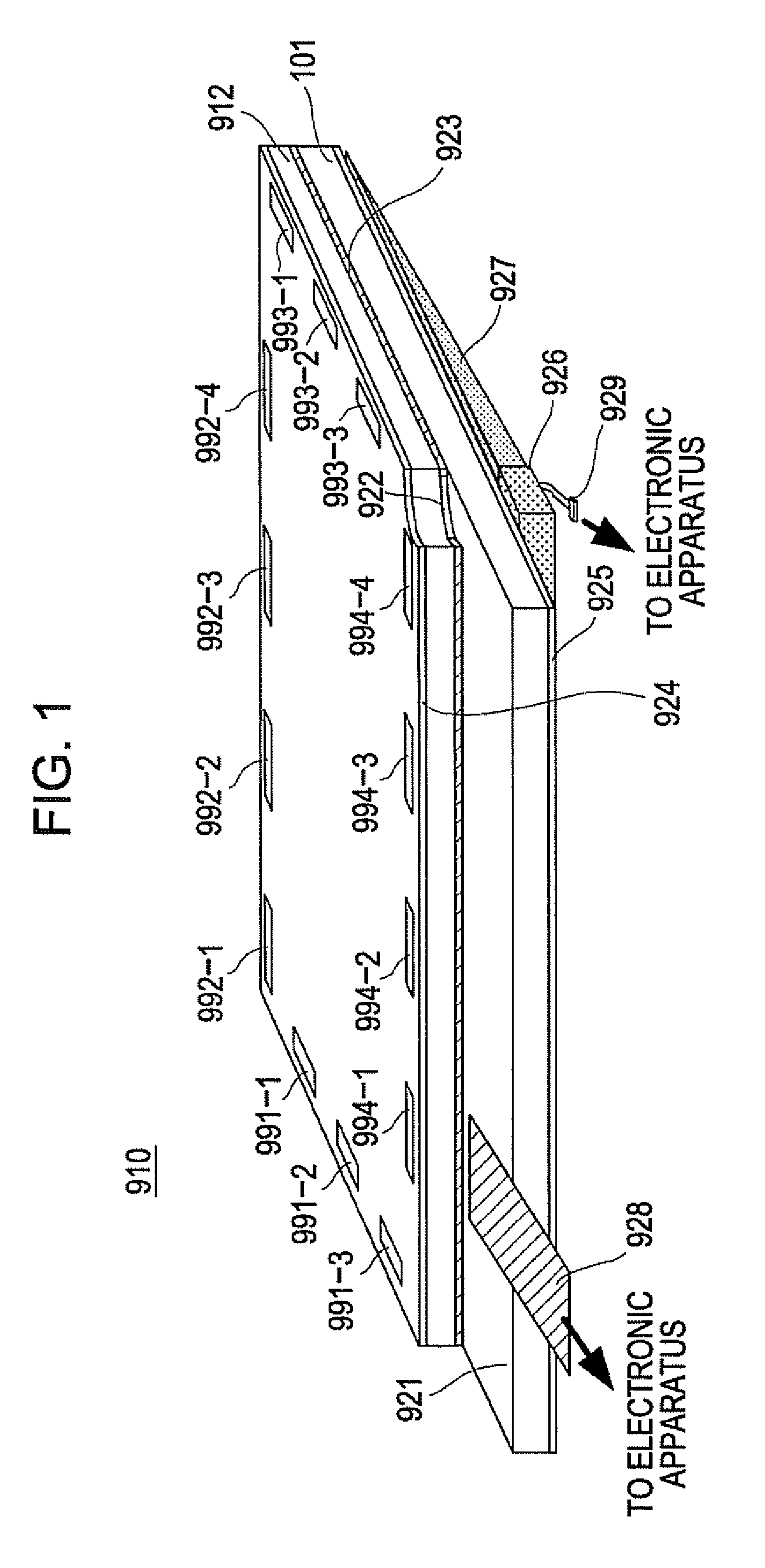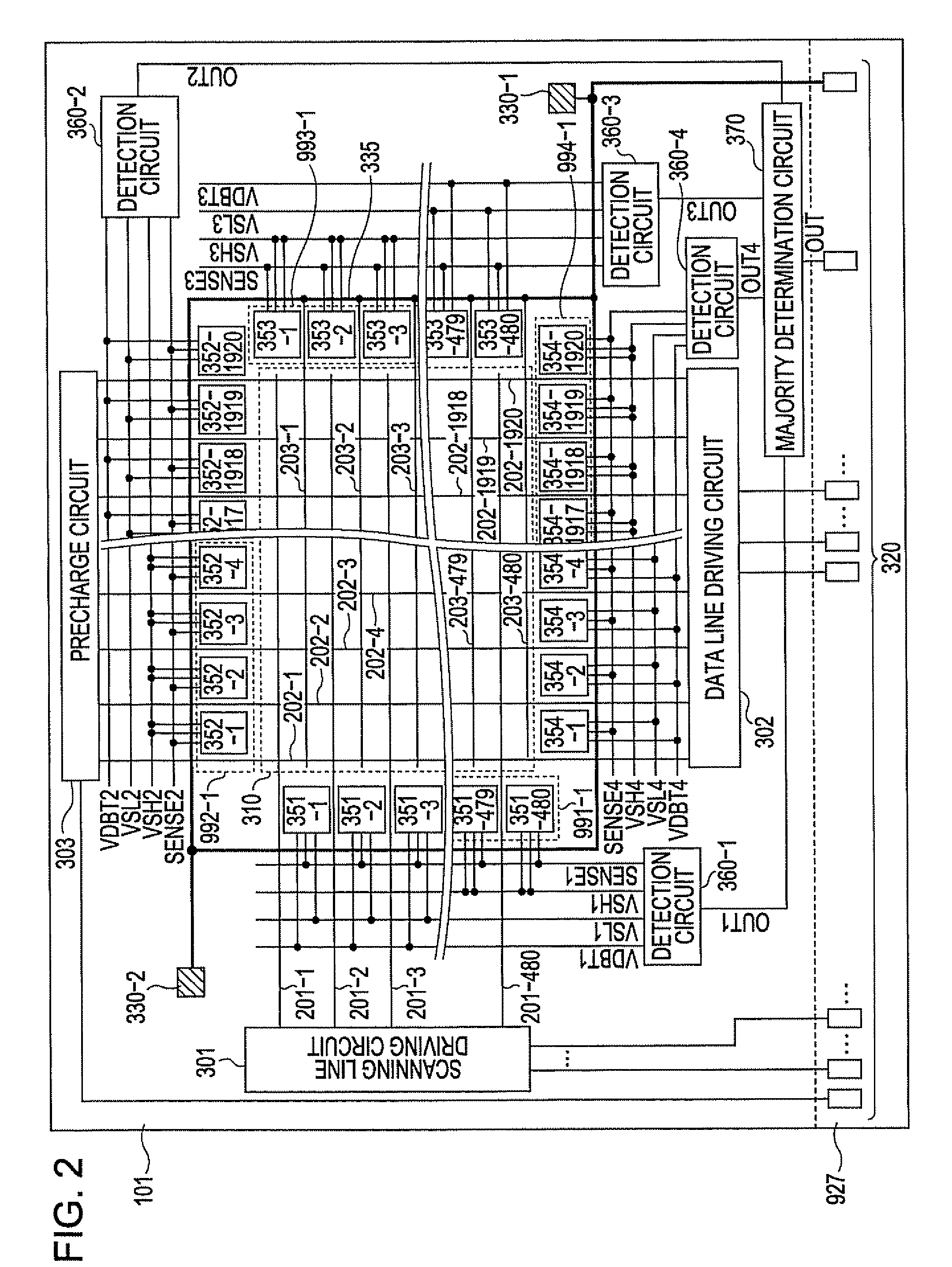Display device and electronic apparatus including display device
a display device and electronic equipment technology, applied in the direction of electric digital data processing, instruments, computing, etc., can solve the problems of deteriorating sensing accuracy of optical sensors, difficult to dispose optical sensors in an inner side relative to the driving circuit, and easy influence of optical sensors, so as to prevent the increase of the fabrication cost of the liquid crystal display device, the detection accuracy is improved, and the accuracy is high.
- Summary
- Abstract
- Description
- Claims
- Application Information
AI Technical Summary
Benefits of technology
Problems solved by technology
Method used
Image
Examples
first embodiment
[0040]FIG. 1 is a perspective view (partial sectional view) illustrating a liquid crystal display device 910 according to a first embodiment of the present invention. The liquid crystal display device 910 includes an active matrix substrate 101, a counter substrate 912 attached to the active matrix substrate 101 using a seal member 923 with a predetermined gap therebetween, and nematic-phase liquid crystal material 922 interposed between the active matrix substrate 101 and the counter substrate 912. Furthermore, although not shown, alignment material formed of polyimide, for example, is applied onto the active matrix substrate 101 and is subjected to rubbing processing so as to obtain an alignment film on the active matrix substrate 101. The counter substrate 912 includes color filters (not shown) corresponding to pixels, a black matrix 940 (refer to FIG. 6, for example) which is formed of resin having a low reflection characteristic and low transmissivity which prevents light from ...
second embodiment
[0084]FIG. 16 is an enlarged plan view illustrating an n-th first-side optical sensor 351-n included in a first-side light-receiving sensor group according to a second embodiment, and corresponds to the n-th first-side optical sensor 351-n according to the first embodiment shown in FIG. 8. The explanatory note shown in FIG. 5 is also employed in FIG. 16. Different points between the n-th first-side optical sensor 351-n shown in FIG. 16 and the n-th first-side optical sensor 351-n shown in FIG. 8 are mainly described hereinafter.
[0085]Unlike the scanning line 201-n shown in FIG. 8, a scanning line 201-n shown in FIG. 16 is formed of a thin film of an alloy of aluminum and neodymium (AlNd) through a contact hole in a region overlapped with a light-shielding electrode 611-n in a plan view. A common potential branch line 618-n formed of a molybdenum (Mo) thin film is arranged between the scanning line 201-n and the light-shielding electrode 611-n. The common potential branch line 618-n ...
third embodiment
[0091]FIG. 18 is a diagram illustrating a configuration of an active matrix substrate 102 according to a third embodiment. Different points between the active matrix substrate 102 and the active matrix substrate 101 according to the first embodiment shown in FIG. 2 are mainly described hereinafter. Components shown in FIG. 18 similar to those shown in FIG. 2 are denoted by the reference numerals used in FIG. 2 and descriptions thereof are omitted. In this embodiment, first-side optical sensors 351′-1 to 351′-480 are arranged as optical sensors 351′ instead of the first-side optical sensors 351-1 to 351-480 of the first embodiment, second-side optical sensors 352′-1 to 352′-1920 are arranged as optical sensors 352′ instead of the second-side optical sensors 352-1 to 352-1920, third-side optical sensors 353′-1 to 353′-480 are arranged as optical sensors 353′ instead of the third-side optical sensors 353-1 to 353-480, and fourth-side optical sensors 354′-l to 354′-1920 are arranged as ...
PUM
| Property | Measurement | Unit |
|---|---|---|
| voltages | aaaaa | aaaaa |
| thickness | aaaaa | aaaaa |
| thickness | aaaaa | aaaaa |
Abstract
Description
Claims
Application Information
 Login to View More
Login to View More - R&D
- Intellectual Property
- Life Sciences
- Materials
- Tech Scout
- Unparalleled Data Quality
- Higher Quality Content
- 60% Fewer Hallucinations
Browse by: Latest US Patents, China's latest patents, Technical Efficacy Thesaurus, Application Domain, Technology Topic, Popular Technical Reports.
© 2025 PatSnap. All rights reserved.Legal|Privacy policy|Modern Slavery Act Transparency Statement|Sitemap|About US| Contact US: help@patsnap.com



